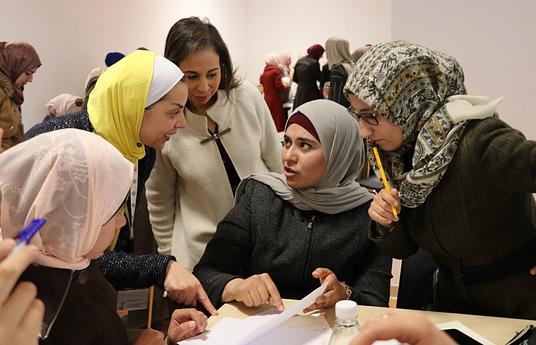Nothing motivates and engages kids or brings out their problem solving, communication, and collaboration like a real-world challenge. That’s why our Student Powered Solutions (SPS) is so effective. It builds partnerships between schools and businesses to bring authentic learning into the classroom.
Through SPS, students partner with a local company to learn about their operations and a problem they are trying to solve. In their classrooms, students team up to take on the challenge, conducting research, proposing and testing theories, building prototypes, and developing potential solutions. At the conclusion, they make a formal presentation, pitching their solutions to their corporate partners.
These project-based learning experiences give kids a chance to apply classroom learning from almost any subject while also building important “soft skills” such as - communication, collaboration, and problem solving. The business partner benefits too, getting a fresh, youthful perspective that may never have been considered. Businesses also get the chance to promote their career opportunities.
To facilitate this learning, SPS teachers employ elements of project-based learning (PBL). Buck Institute for Education defines PBL as, “a teaching method in which students gain knowledge and skills by working for an extended period of time to investigate and respond to an authentic, engaging, and complex question, problem, or challenge.” Key elements include:
- an authentic open-ended question or problem
- student voice and choice
- research and development
- crafted prototypes or draft solutions
- feedback from peers and experts; multiple solution iterations
- a public presentation of student work
PBL puts students at the center of their learning. And works for students of all abilities, skills, and grade levels.
SPS elevates and empowers teachers with a new pedagogy that engages students as partners in creating their learning. To make SPS more effective and powerful we integrate human-centered design (HCD) methods with PBL. HCD techniques help students become more effective problem solvers and collaborators and they provide teachers with tools they can use to facilitate learning and impactful idea generation.
Schools and businesses in the Pittsburgh region have engaged in “SPS” type projects for many years. Teachers in South Fayette Township School District were among the first to build entire courses around the SPS model. They engaged businesses to provide real-world challenges and formally incorporated elements of project-based learning and human-centered design. Recognizing the powerful impact these learning opportunities bring to students, leadership in South Fayette reached out to the Consortium for Public Education so that we could bring their model to scale across our region. Over the past two years, Consortium staff have formalized training and support for new teachers and businesses adding more than a dozen new SPS partners with many more on board for next school year. We have also expanded SPS to include students from some of the most economically challenged school districts and have demonstrated the effectiveness of this model for all students.
See the post below, "Authentic Experiences for Students" and the video, "Student Powered Solutions in Action" for more information and an example of SPS in action!



